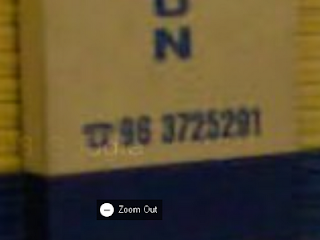Does Google blur phone numbers on Street View?

I was looking for a business telephone of a tyre repair garage. Unfortunately the small shop might not be paying to get an ad on yellow pages and I could not find it. Next step was to try to find it on Google Maps Street View, as I knew there were lots of text on the garage walls. Unfortunately, though I could find that street photos, the photos blurred the last group of seven numbers. Though I've searched around, it does not seem to be an error: Apparentely the software does blur not only faces but also license plates. I wonder wheter these numbers on the wall might be considered license plate numbers. At any rate I was lucky enoughthat one of the angles of the scene did not blur the numbers. Hopefully we'll get an appointment to get our punctured tyre repaired soon.

